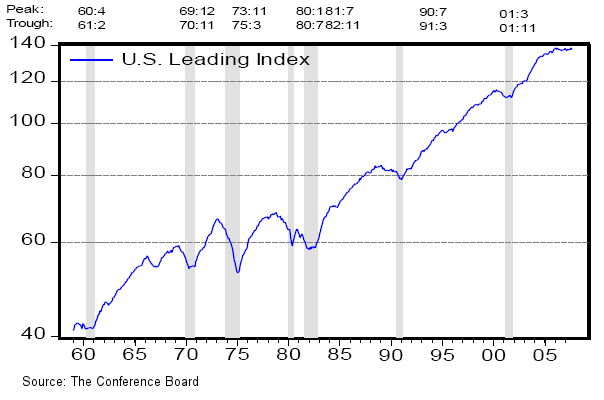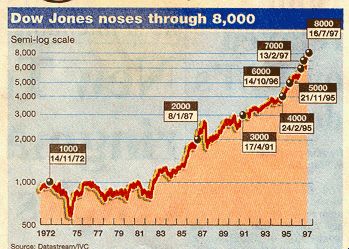News Home
Home - Index - News - Krisen 1992 - EMU - Economics - Cataclysm - Wall Street Bubbles - US Dollar - Houseprices
Parallels with 1973
Perhaps we should examine parallels with 1973
Tony Jackson, FT November 26 2007
Some would say severe inflation is today impossible, since central bankers have learnt better. That was certainly the view around 1970, after 20 years of non-inflationary growth - rather similar to the so-called Great Moderation of the past two decades.
As a result, investors were continuously behind events. One sign of this was that during 1975 real yields on US Treasuries averaged minus 3 per cent and real gilt yields minus 11 per cent.
As to what might spark inflation this time, there is no shortage of theories.
Perhaps the most weighty is that proposed by Alan Greenspan: that after years of exporting deflation, China and India may now start exporting inflation instead.
But perhaps we should examine parallels with 1973 on a broader front.
Ian Harnett of Absolute Strategy Research puts the case as follows.
In the early 1970s, the central problem was that the US was engaged in a costly war that it could not afford. One result was a weakening of the currency which - at a time of fixed exchange rates - chiefly expressed itself in a fall of the dollar versus oil and gold.
As a result, the exchange rate system collapsed. That left countries with a choice: whether to peg their currencies to the dollar and import inflation, or float and import recession. And this, of course, is the choice now facing China and the Arab oil-producing states.

Bill Gross, chief investment officer of Pimco, the world’s largest bond fund, has in recent years become famous for issuing downbeat warnings about the credit world.
This month, however, his tone has turned positively apocalyptic.
“We haven’t faced a downturn like this since the Depression,”
Gillian Tett, FT November 27 2007
